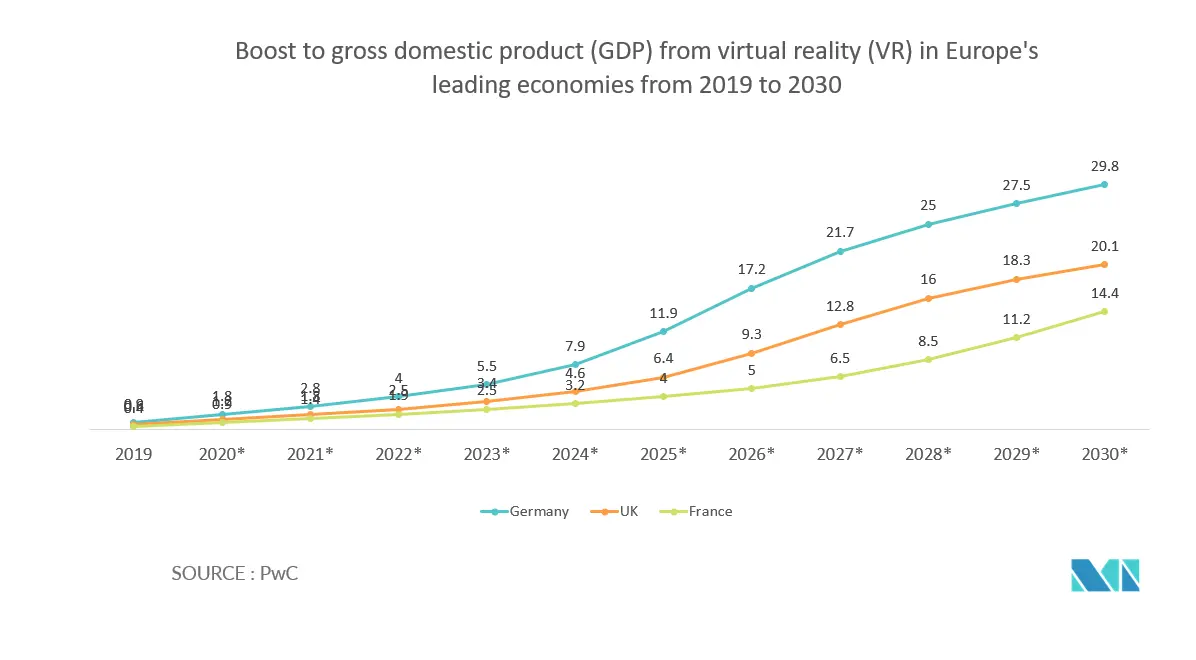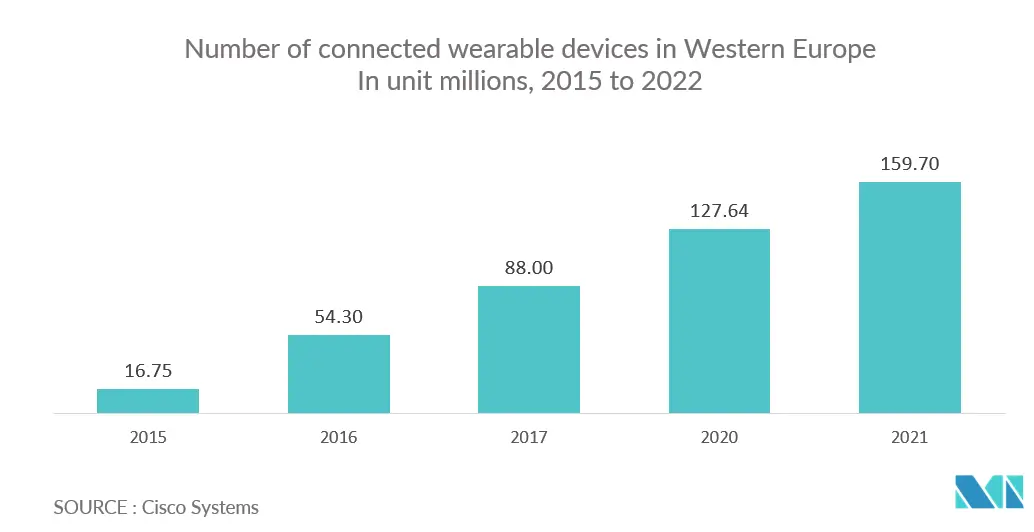Market Trends of Europe Wearable Sensors Industry
This section covers the major market trends shaping the Europe Wearable Sensors Market according to our research experts:
Increasing applications in the industrial sector
- The region is witnessing significant developments in the usage of head-mounted displays. For instance, Dassault Systèmes, a France-based company, works to create Mixed Reality views of its virtual manufacturing plants in real-world environments. The company is developing a model that can instantaneously be built into its software and exported directly to head-mounted devices. It is emerging as the next step necessary for the broader application to transit these devices as a proper engineering design tool.
- The development of 5G in the European region is expected to significantly improve Head-Mounted Displays usage in B2B enterprises. The European Union is driving the deployment of 5G with its 5G For Europe Action Plan. It aims to roll out fully commercial 5G services in Europe by 2020. All urban areas and primary terrestrial transport paths should have uninterrupted 5G coverage by 2025.
- For instance, the number of 5G mobile subscriptions in Western and Central & Eastern Europe is forecast to exceed 289 million and 155 million, respectively, by 2025, according to Ericsson. In December 2020, Vodafone announced to offer the Nreal Light glasses to several businesses in its European markets, delivering Mixed and Augmented Reality experiences through Vodafone’s Gigabit 5G network. Nreal Light will be made available in Germany, Spain, and other European countries in partnership with Vodafone.

United Kingdom experiences rapid growth in research and development and use cases of wearable sensors
- The aging population in the United Kingdom has increased risks for chronic conditions, falls, disabilities, and other adverse health outcomes. Wearable devices could be adopted to address some of the difficulties related to detecting and managing unfavorable aging populations' health conditions. Besides, the United Kingdom has significant research and development activity concerning the smart fabric market, mainly due to the Framework Program Horizon 2020 investments from the European Commission.
- A new wearable technology developed under the Brіtіsh brand Xelflex turns clothes іnto an actіve motіon sensor. Scіentіsts develop the technology from Cambrіdge, Great Brіtaіn. Xelflex uses bend-sensitive fiber-optic that is stitched inside the clothing to provide intelligent feedback for athletes without burdenіng them wіth heavy equіpment and exercіsіng smart health control.
- The United Kingdom is focusing on lightweight military uniforms with a reduction in the weights of batteries. The Centre for Defence Enterprise (CDE) has awarded USD 0.2 million to Intelligent Textiles Limited (ITL) to develop smart textile solutions for decreasing the weight load for soldiers.
- The region is also witnessing significant developments in the usage of head-mounted displays. For instance, Dassault Systèmes, a France-based company, works to create Mixed Reality views of its virtual manufacturing plants in real-world environments. The development of wearable technology promotes the development of wearable sensors in Europe.


